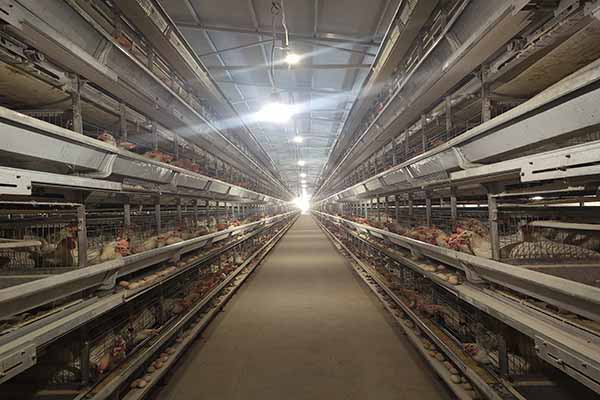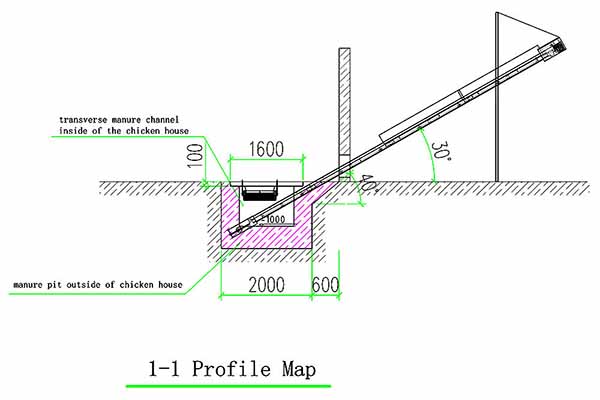Safety Standards for Kenyan Chicken Farming Equipment: Ensuring Quality and Productivity
Time : 2025-06-27
Kenyan chicken farming, a burgeoning sector of the agricultural industry, requires sophisticated and high-quality farming equipment to support the production process. This article delves into the critical safety standards for Kenyan chicken farming equipment, aiming to enhance productivity, maintain health standards, and promote sustainability. We will explore the various aspects of safety standards in the context of chicken farming equipment, including design, maintenance, and usage guidelines.

Introduction to Kenyan Chicken Farming
The chicken industry in Kenya is one of the fastest-growing segments within the agriculture sector. Driven by increasing domestic demand and export opportunities, chicken farming has become a lucrative business. As a result, farmers have invested in advanced farming equipment to improve their production processes and yield quality poultry products. Ensuring the safety and efficacy of these tools is paramount to the success of the industry.
Design Standards for Chicken Farming Equipment
Structural Integrity and Materials
The foundation of safe equipment lies in its structural integrity and choice of materials. For Kenyan chicken farming equipment, materials like stainless steel, galvanized iron, and high-quality plastic are commonly used due to their resistance to corrosion, durability, and non-toxic properties. The design should also incorporate safety features such as secure fastenings and shock-absorbent components to protect birds and personnel.
Space and Accessibility
Equipment should be designed with space optimization in mind. The chicken pens and cages should be of an appropriate size, providing sufficient room for birds to move, lay eggs, and access food and water. Accessible spaces allow farmers to conduct maintenance, observation, and health checks without causing distress to the poultry.
Energy Efficiency and Environmentally Sustainable Design
Chicken farming equipment must prioritize energy efficiency and sustainability. Utilizing renewable energy sources and energy-efficient lighting and ventilation systems can help reduce costs and minimize the environmental impact. Equipment should be designed to optimize energy consumption and waste management, contributing to a sustainable farming ecosystem.
Maintenance and Service
Regular Inspection and Maintenance
Proper maintenance is crucial to the safety and functionality of chicken farming equipment. Regular inspections help identify and address potential issues before they escalate into significant problems. Routine maintenance includes cleaning, lubrication, and repair of all moving parts to ensure the longevity of the equipment.
Service Contracts and Professional Support
Farmers in Kenya can benefit from service contracts that offer comprehensive support, including scheduled maintenance, repairs, and troubleshooting. Working with equipment manufacturers and suppliers who provide expert service can enhance safety standards and optimize operational efficiency.

Training and Safety Education
Operational Training for Personnel
Properly trained staff are key to safe chicken farming practices. Employers should invest in operational training for all personnel involved in the handling and operation of chicken farmin g equipment. This training should cover safety protocols, equipment usage, and emergency response procedures.
g equipment. This training should cover safety protocols, equipment usage, and emergency response procedures.
Safety Campaigns and Information Materials</hfty
Conducting safety campaigns and distributing informative materials can further reinforce the importance of safety standards. Such campaigns can educate farmers on the latest safety technologies, regulatory compliance, and the best practices for operating and maintaining chicken farming equipment.
Regulatory Compliance and Certification
Kenyan chicken farming equipment should comply with the local and international standards and regulations set forth by bodies such as the Kenya Bureau of Standards (KEBS) and the International Egg Commission (IEC). Manufacturers must obtain necessary certifications to ensure that their products meet these safety standards, thus gaining market credibility and consumer trust.
Conclusion
In conclusion, adhering to safety standards is an essential component of successful chicken farming in Kenya. From design to usage and maintenance, careful attention must be paid to the various aspects of chicken farming equipment to enhance productivity, promote sustainability, and protect both poultry and human life. By embracing these standards, Kenyan farmers can foster an environment that encourages growth and development in the poultry industry while upholding safety and ethical principles.











